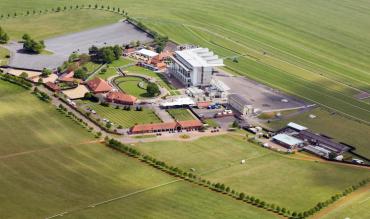Also known as ‘Headquarters’, Newmarket has two Flat racecourses, the Rowley Mile and the July Course.
Both of them consist of a long and wide straight track and the local horse population ensures that there are plenty of well attended fixtures throughout the entirety of the Flat season.
Racing takes place on the Rowley Mile in April and May before the action switches over to the July Course in the height of summer before moving back to the Rowley Mile for the autumn and the end of season fixtures.
Biggest Races Newmarket
Unsurprisingly there is no end of feature races at Newmarket. April sees the first of the Classic trials – the Craven Stakes and Nell Gwyn Stakes which are then followed in May by the first Classics themselves - the 1000 and 2000 Guineas.
The July Cup and the Falmouth Stakes are run at the July meeting, with the top juvenile races, the Middle Park Stakes, Cheveley Park Stakes, Dewhurst Stakes and Fillies Mile all taking place in the autumn.
There are two big handicaps to end off the season in October in the shape of the Cambridgeshire and the Cesarewitch (aka The Ces). They tend to be very popular betting races due to the size of their fields.
Newmarket Course Configuration
Although the Rowley Mile and the July Course are two distinct entities, the two tracks converge to form a huge Y-shaped course, the base of which is known as the “Cambridgeshire Course” or “Beacon Course” as it forms part of both tracks.
An aerial view (Google Earth) of the Newmarket site would give you a better understanding of the layout of this massive racecourse.
Not many people are aware of it but there is actually a round course at Newmarket, but it is only used once a year for the historical Newmarket Town Plate. It is a three mile plus amateur-only affair which tends to be for local participants in the main.
Newmarket‘s wide and straight tracks cater well to large field handicaps. The maximum field size of 35 for both the Cambridgeshire and the Cesarewitch is the biggest of any race in the United Kingdom after the Aintree Grand National (max 40).
Newmarket often produces good racing ground on both tracks and in the summer rides on the quick side. The track has an excellent watering system in place and rarely gets scorched by the sun despite its wide expanse.
A rather interesting trivia fact that often comes up in quizzes is that the start of the Beacon course is in the county of Cambridgeshire, but the finishing posts of both the Rowley Mile and July courses are physically located in Suffolk, making it the only racecourse in the country which spans two counties.
Make sure you remember that for the next time it comes up in your local pub quiz!
Newmarket Fixtures
You can find the remainder of Newmarket’s fixtures for the 2023 season HERE. Perhaps you might get along there to enjoy the action and do some online horse racing betting?
*Credit for the photos in this article belongs to Alamy*
